Ten Years of Entrepreneurship, Rokid Unveils the 'Next-Generation Ray-Ban Meta'
![]() 11/19 2024
11/19 2024
![]() 518
518
Text/VRGyro
On November 18, AR manufacturer Rokid held the Rokid Jungle 2024 Partner and New Product Launch Conference, releasing two glasses products. These include the Rokid Glasses, a new generation of AI+AR glasses co-branded with Bolon, priced at 2499 yuan, with an expected sales launch in the second quarter of 2025; the other is an AI Smart Imaging Glasses, a non-AR light engine version, with no specific price announced yet.
VRGyro was invited to attend this event and experienced the actual products on-site. Additionally, based on the new products, we also participated in an interview with Rokid CEO Misa to answer a series of questions about the products.
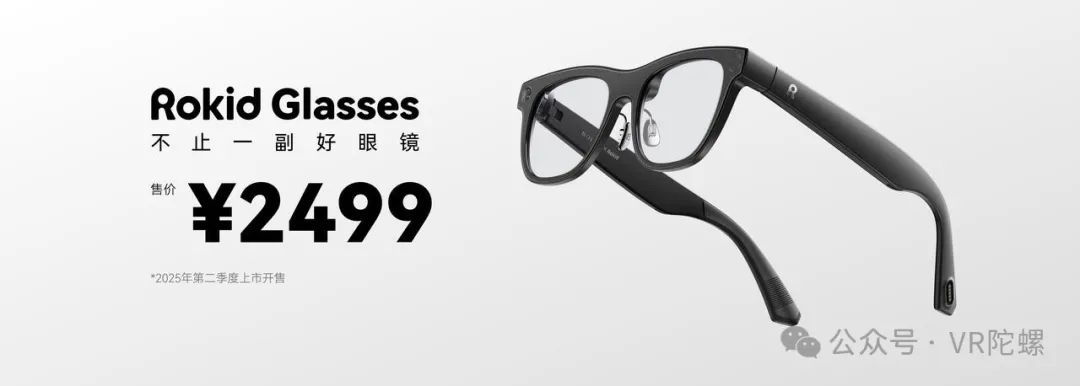
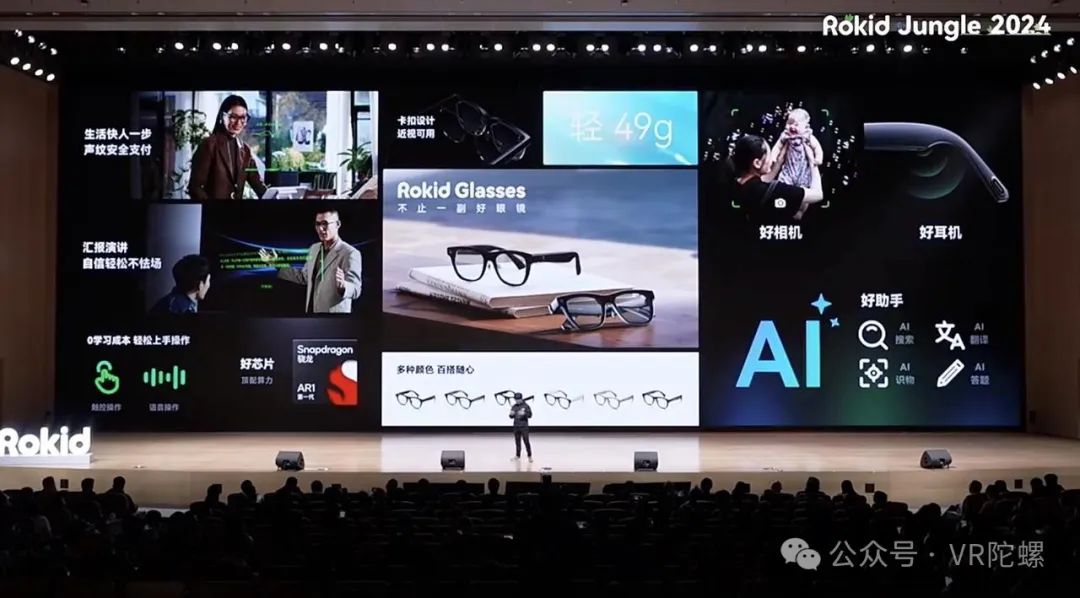
Behind the 49g: 1200W Pixel + Snapdragon AR1 + 'One-to-Two' Optics
Rokid Glasses adopts a D-shaped frame design, similar to the sensor layout of Ray-Ban Meta, with a 1200-megapixel camera on the left side of the frame and an LED indicator light on the right side.
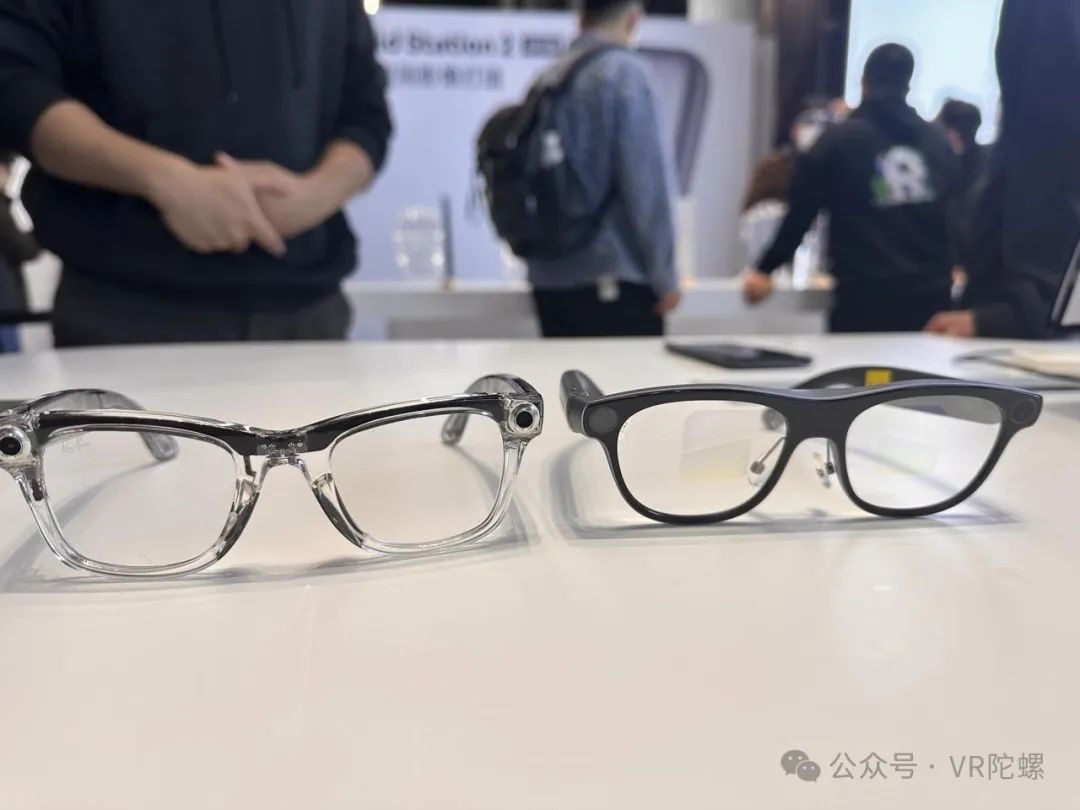
Left: Ray-Ban Meta, Right: Rokid Glasses (Source: VRGyro)
In terms of configuration, Rokid Glasses is equipped with the Qualcomm Snapdragon AR1 platform, paired with 2GB RAM + 32GB ROM. This SoC is specifically designed for AR glasses, with the core highlight being its balance of performance, functionality, data transmission, AI, and power consumption.
Furthermore, the 14-bit dual ISP of the AR1 can capture 2.7 billion pixels per second, well-suited to the needs of AI glasses in photography. This is one of the reasons why many AR manufacturers choose AR1 over lower BOM W-watch series SoCs. However, the price of AR1 is not cheap, accounting for approximately 25% of the hardware cost of Rokid Glasses.
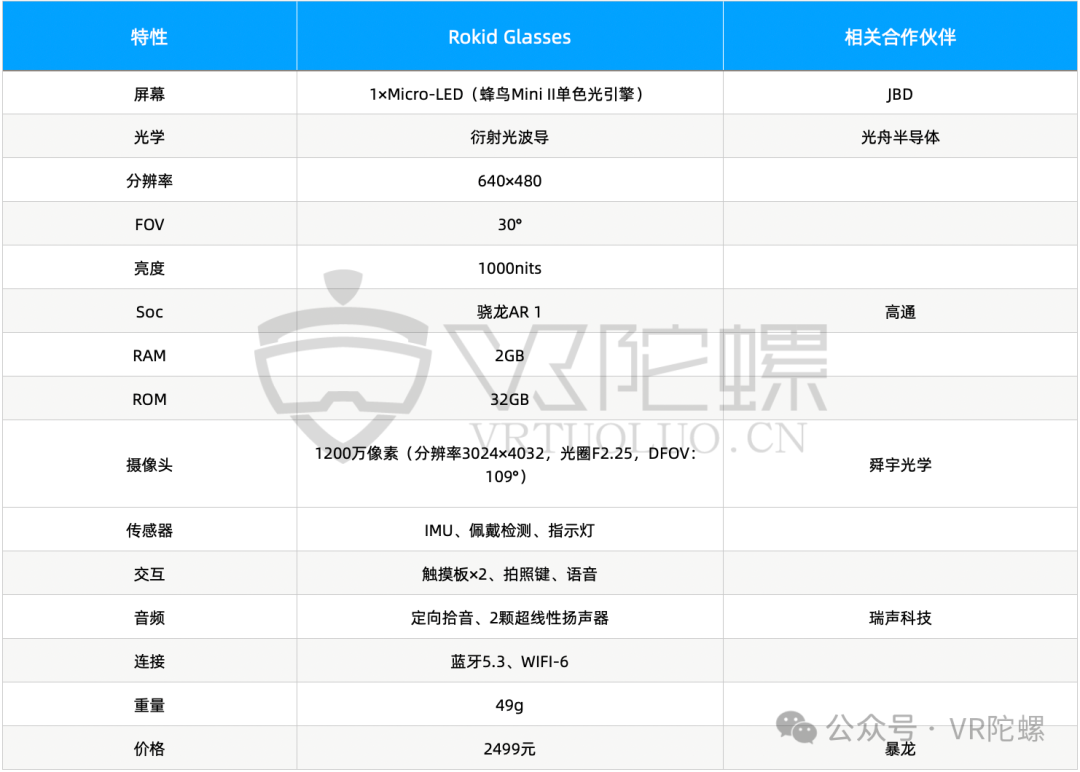
Source: VRGyro
Optically, Rokid Glasses employs a single green Micro-LED + diffractive waveguide solution. Thanks to the 'one-to-two' optical design, Rokid Glasses ensures single-green AR display while further reducing hardware costs.
However, the limitation of the 'one-to-two' optics is that it cannot provide the 'binocular parallax' effect for 3D vision. Additionally, from an aesthetic perspective, the central part of the Rokid Glasses frame, which houses the 'one-to-two' optics, appears somewhat abrupt. However, from an external third-person perspective, it does not significantly impact the overall aesthetic design.
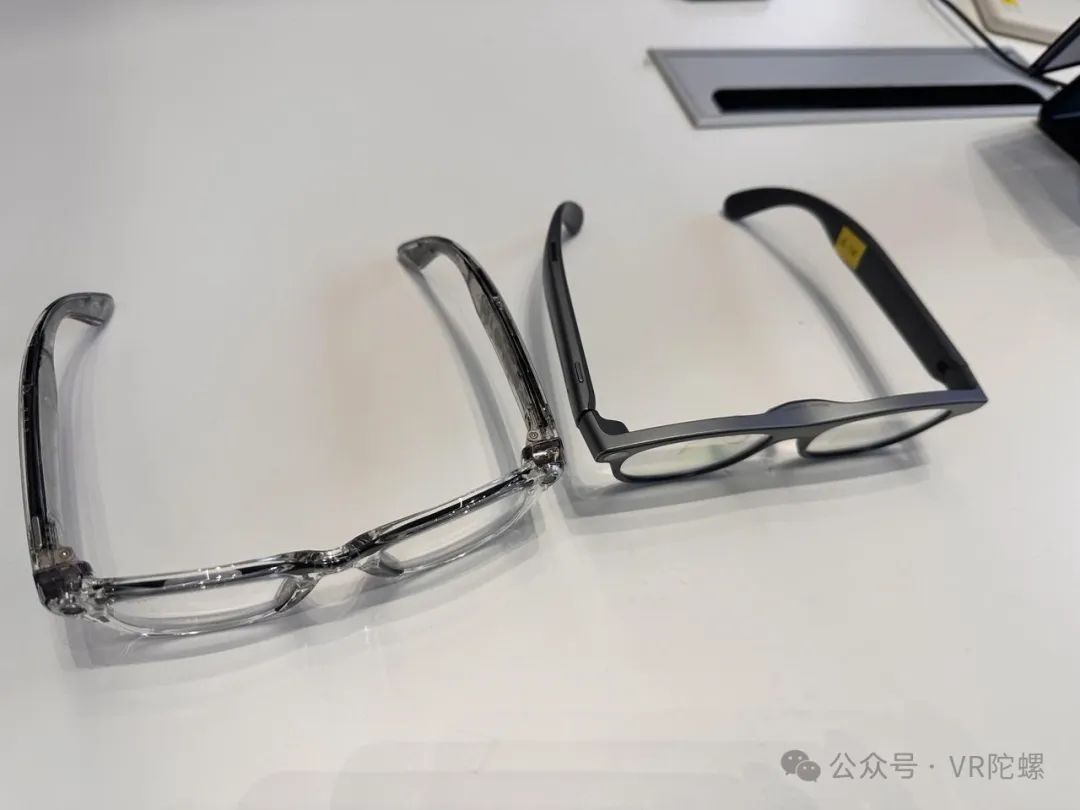
Left: Ray-Ban Meta, Right: Rokid Glasses (Source: VRGyro)
Misa explained that the reasons for choosing the 'one-to-two' optics include the frame layout design leaving space for the camera, preventing impact on the appearance and comfort of the glasses. It also facilitates wiring (as high-speed optical wiring under a single optical engine layout poses significant challenges) and cost considerations (dual optical engines significantly increase the price, while current monochrome displays have weak stereo demands). However, with advancements in technology and design, future changes may occur. In terms of interaction, Rokid Glasses supports voice and touch control. It is said to have a full working battery life of 4 hours, with the glasses case (charging dock) capable of recharging it ten times, with a single full charge taking only 20 minutes.
The entire Rokid Glasses weighs only 49g, which is a relatively surprising figure, considering that the Ray-Ban Meta, without an AR light engine, also weighs 49g. Additionally, the price of 2499 yuan is highly attractive.
With the support of numerous partners, the initial experience with Rokid Glasses
AI is the core foundation of Rokid Glasses. In Misa's view, AR glasses are the best carrier for AI. Therefore, compared to previous AR glasses or smart glasses like Ray-Ban Meta, Rokid Glasses offer a richer range of usage scenarios. Many partners were present at the event, including global renowned eyewear brand Bolon, professional sports electronics brand Garmin, Alipay's AI life butler ZhiXiaobao, mainstream video platform iQIYI, Alibaba's office product DingTalk, global chip giant Qualcomm, etc., providing strong support for the product from underlying technology to upper-layer applications.
In terms of application scenarios, Rokid Glasses support information reminders, phone calls, first-person-view photo capture, AI Q&A search, multimodal AI interaction, AI photo answering, AI multilingual translation, AI quick replies, AI real-time navigation, AI flash notes, AI health reminders, etc. Additionally, Rokid has collaborated with ZhiXiaobao to introduce voiceprint payment technology on Rokid Glasses, allowing users to scan codes and complete small payments with one click using Rokid's glasses; Rokid has also partnered with Garmin, utilizing watch sensors in conjunction with Rokid Glasses to enable data transmission and AR display, enabling safer and real-time health monitoring in sports scenarios such as cycling.
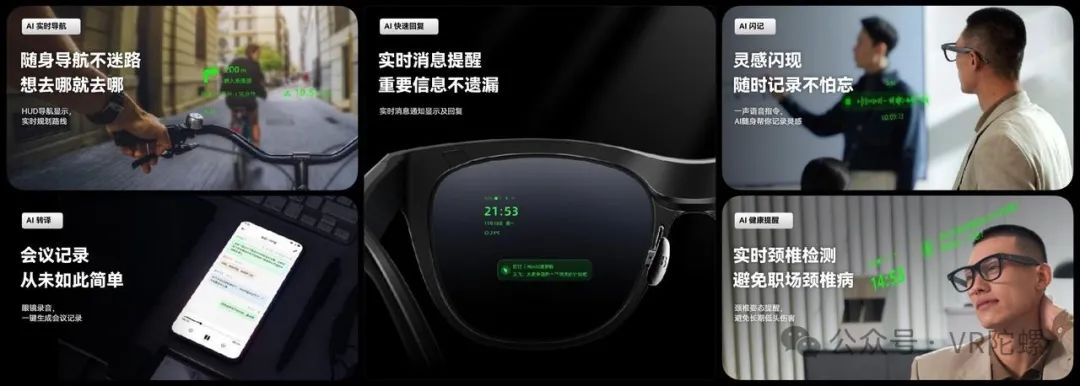
According to Rokid staff on-site, the technical solution for Rokid Glasses in various scenarios primarily involves connecting to mobile apps via Bluetooth. In the future, different commands may be judged and distributed based on different command words or the ability to recognize the intent of large models on the client side, thereby directly accessing the cloud to obtain support and invocation of larger-scale AI model capabilities.
More large model manufacturers are also exploring the realization of deeper-level AI Agent capabilities. According to the presentation at the conference, ZhiXiaobao directly calls cloud interfaces rather than obtaining services through mobile apps, such as calling interfaces of apps like Alipay or Ele.me for intent understanding and action execution of relevant commands. This demonstrates that the integration of different business lines within large internet enterprises is feasible, such as product search/instant search on Taobao, Ele.me's food delivery services, Alipay's secure payment capabilities, etc. However, for more complex processes and scenarios requiring more information input, whether the glasses can independently complete all operations remains to be further explored.
VRGyro experienced the product on-site. Firstly, its appearance is very stylish. It is understood that Bolon designed 6 SKUs for it, covering different color schemes, and it looks no different from ordinary glasses overall. The wearing experience is very lightweight; the product displayed is not the final ID, weighing 49g. Misa stated that the final version for sale will further reduce in weight.
RokidAI Smart Glasses Spatial Computing VisionPro








